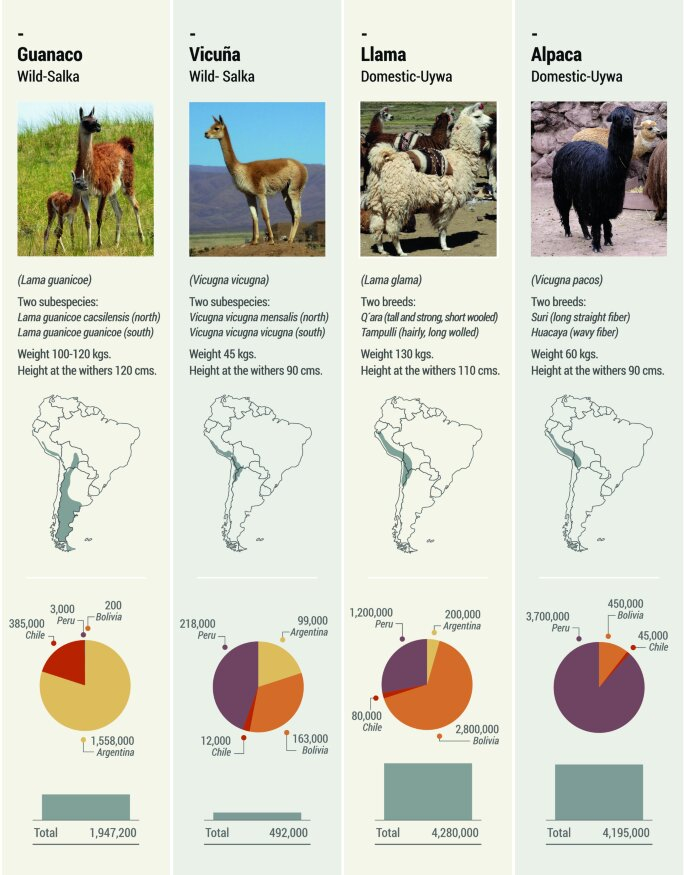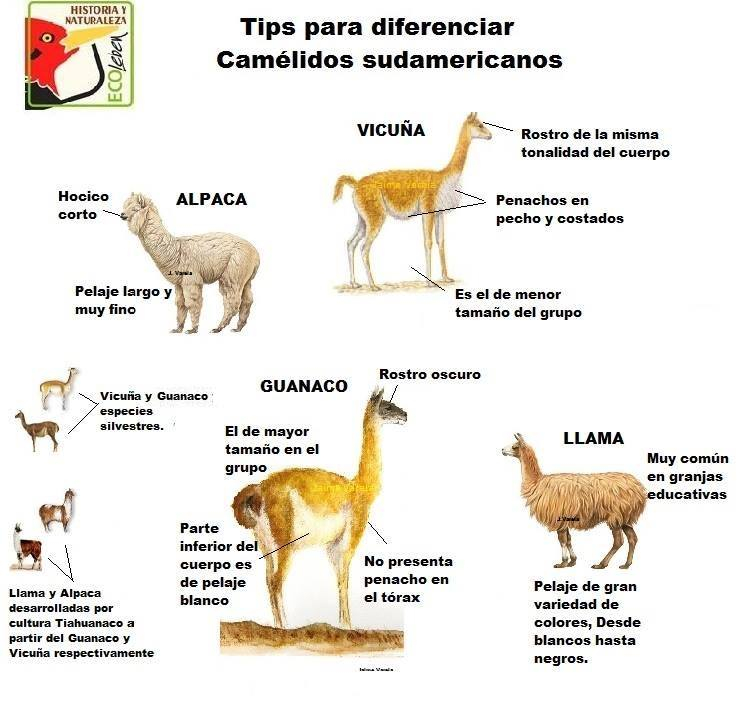There are “New World” camels
South America is home to "New World" camels. They have the same parent, the Protylopus, as the three species of Old World camels previously described. 40 million years ago, their progenitor existed on Earth, and their progeny dispersed to South America and Asia. The creatures we see today are the result of those who traveled to South America. The vicua (Vicugna vicugna) and guanaco (Lama guanicoe) are wild camels while the llama (Lama glama) and alpaca (Lama pacos) are domestic animals in New World .
Vicuas are tiny, highly uncommon creatures that seldom grow taller than 3 feet (90 cm) at the shoulder or weigh more than roughly 50 kg. Vicuas are the only camels with continuously developing bottom incisor teeth and solely outer-surface enamel. Taxonomists have classified them as a distinct genus as a result of this trait. Vicuas can quickly cover the dry, open grasslands where they inhabit, which are located at elevations between 3,500-5,700 m. Vicua fur is one of the world's softest fabrics that can be made, and for many years, only the Inca kings wore it. The bigger guanacos inhabit mostly open, arid land, from coastal plains to high highlands. On their backs, guanacos have cinnamon-colored hair; on their undersides, it is white. They have black faces in contrast to the tiny vicuas. The tallest camel in South America, the guanaco is less than 2 meters tall and weighs just approximately 113 kg.
Natives of the Andes Hillsides began breeding the guanaco some 4,000 years ago to create two additional domesticated camels: the long-haired alpaca and the sure-footed llama, which were developed for strength, endurance, and the capacity to carry heavy loads across steep mountains. A typical male llama weighs around 90 kg, yet it can traverse mountainous terrain for roughly 24–32 km each day while carrying a load that weighs about two-thirds of that much on its back. The Incas transported silver from their mountain mines using llamas. The other domesticated breed, the alpaca, has long hair that is appreciated for warm blankets and garments because it is soft, light, and water-resistant. Before being sheared, the hair on certain alpaca breeds practically touches the ground. Because it is excessively coarse, llama hair is not usable for weaving. To generate an animal with hair that is both stronger and softer than either of its parents, llamas and alpacas are frequently mixed.












